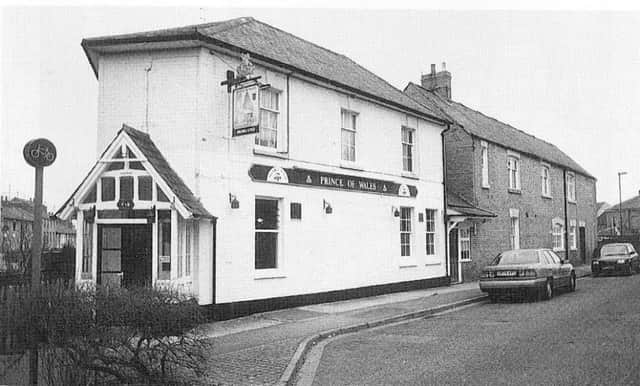Changes in Grimsbury


In particular auctions took place at the Cricketers Inn during august 1874 and at the Prince of Wales Inn on July 23rd 1886.
My article today is based upon yet a further sale three years later in September 1889.
Advertisement
Hide AdAdvertisement
Hide AdIt is hardly surprising that T & S orchard, who were builders on Grimsbury’s Bridge Bank described these occasions as ‘favourable opportunities for builders and also small capitalists seeking investment for their money’.
As in 1886 the scene of auction activity was at the Prince of Wales at the junction of Centre Street and South Street.
Graves and Miller based in Banbury High Street arranged the lots in accordance with the wishes of the late Samuel Green as set out in his will.
The property featured in the sale particulars consisted of six messuages (dwelling houses with adjoining buildings and land), one of which was freehold, and used as a beer house known as Our House and located on the corner of West Street and North Street.
Advertisement
Hide AdAdvertisement
Hide AdVera Wood in her study of Inns, Taverns and Beer Houses records that it was tied to Hunt Edmunds’s brewery, had an off licence facility and could be used to billet two men.
The first recorded ‘mine host’ was W. Plaster (1863-67), followed by J. Lampitt (1867-1886) and then Henry Johnson 1886-1896 deceased).
At the time of the auction the lease on the premises expired at Michaelmas 1892.
It seems highly likely that the nearby Freehold Land association development of working class housing was a source of customers.
Continuity of licensees seems to suggest this.
Advertisement
Hide AdAdvertisement
Hide AdThe beer house was part of the first lot that also included two other houses in West Street, which were of brick and slate construction.
They shared a wash house and had a side entrance on North Street.
Included in a separate lot were three comparable terrace properties that were also close to the beer house.
Once again washing facilities were communal but each had a separate side entrance.
Advertisement
Hide AdAdvertisement
Hide AdSale details listed the current occupants as Messrs Barlow, Price and Dumbleton.
Unlike the sales of 1874 and 1886 this one included lots comprising building plots situated in Neithrop.
The Castle Streets in general formed the northern edge of the town and was a sought after area for people with capital wanting to secure investment opportunities close to the town centre.
The three sites available comprised plots just under 300 sq. yards.
Advertisement
Hide AdAdvertisement
Hide AdInterestingly the auctioneers viewed the sale especially attractive for the likes of brewers and builders.
Neither should come as a surprise as brewing had been a major industry in the market town and the abundance of raw materials, especially bricks, opened up endless possibilities.
The Castle Streets had a history of being targeted by small scale speculators.
Interestingly the smells arising from processes carried out at the rope works does not seem to have been a deterrent to either builders or buyers.
Advertisement
Hide AdAdvertisement
Hide AdNearby the works was a terrace of houses (now owned by Alcocks) that date from the 1880s.
A study by Barrie Trinder and Steve Litherland suggests that they were part of a speculative housing boom.
Census details reveal that they were occupied by working class people such as drapers, labourers, plush weavers and washer-women.
omeone who knew the Castle Street East and the surrounding area well during her youth from 1922 to 1939 was Cicely Bailey.
Advertisement
Hide AdAdvertisement
Hide AdIn a booklet of memories she indicates that the housing legacy included acceptable properties on both sides.
Some were tall with cellars and the occupants took in lodgers, especially from the Palace Theatre in the Market Place.
Opposite were smaller properties with bay windows and small front gardens.
This street had the notable advantage of two shops, one just a front room for the sale of confectionary but the other was what Cicely called a ‘proper’ shop with an attached bakehouse.